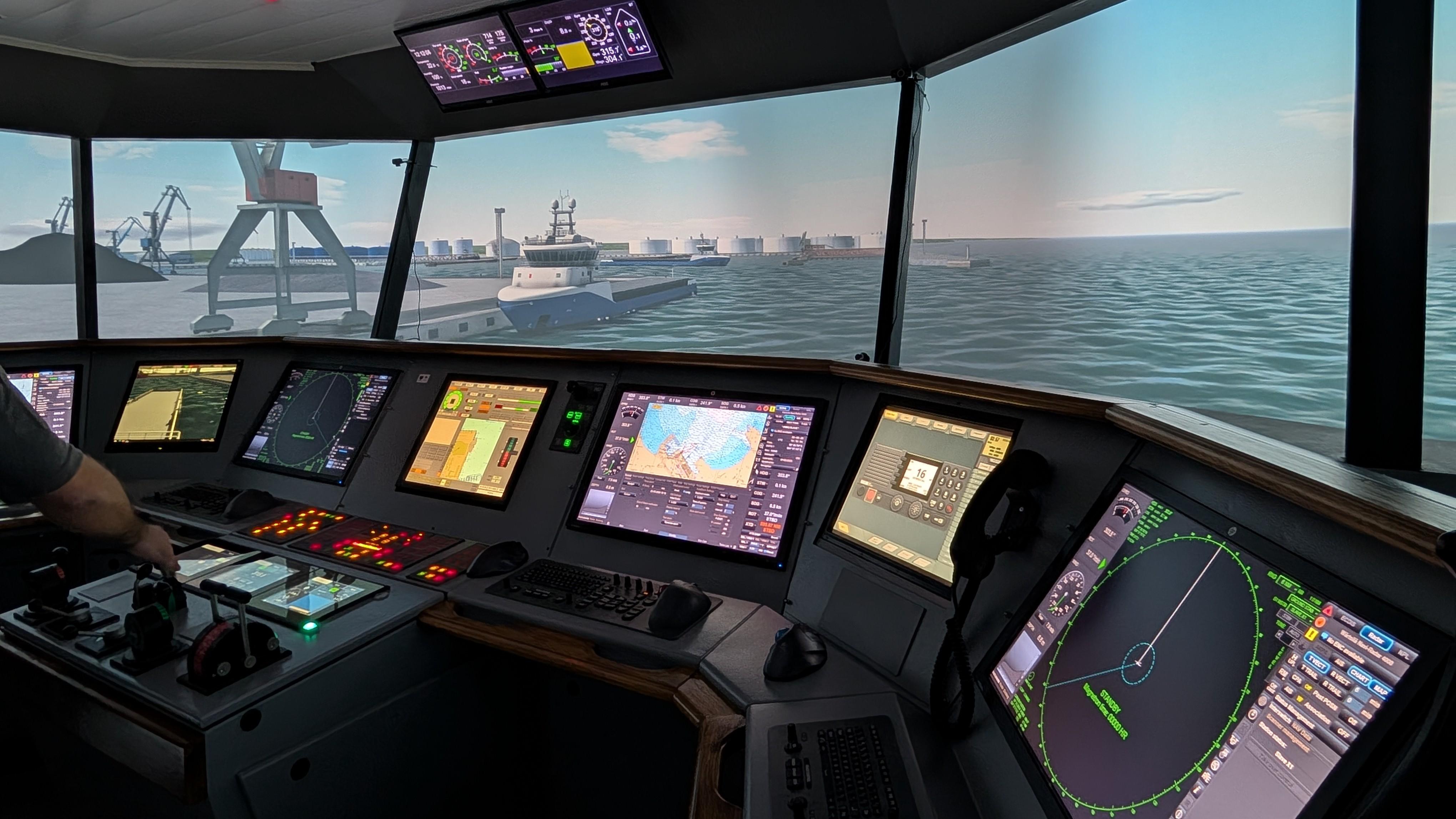At the TalTech Estonian Maritime Academy's Simulation Centre, customised simulation models were developed for GoTa Ship Management to train crews for their new-generation hybrid cargo vessels, Electramar and Aquamar. These innovative, environmentally friendly ships are delivered on a rolling basis, with the seventh vessel handed over in India in June and subsequent deliveries planned every three months — making systematic and early crew training crucial.

Since no ready-made models existed for these specific vessels, the Simulation Centre’s technicians quickly found a solution: they modified existing models using advanced simulation software, for example by adjusting the superstructure position and other key details. A GoTa captain visited the centre to test the models, provided detailed feedback, and worked with the Simulation Centre’s instructor to fine-tune the ship handling characteristics for maximum realism.
The simulation models take into account the specific manoeuvring characteristics of ships. For example, when the propeller rotates to the right, the bow tends to swing to the left and the stern sharply to the right when going astern. The ship models, just like Gota Shipping’s new vessels, are equipped with a rudder that can turn up to 45 degrees, giving the ship good manoeuvrability. However, a rapid reduction in speed can cause a loss of steering control and make the ship suddenly veer off its original course. All these features can be realistically practised in the simulator, so that ship operators are prepared for different situations.
At Gota Shipping’s request, various scenarios have been prepared. Captains can practise entering the Brunsbüttel lock from the Elbe River and sailing in the NOK Canal. They can also train for entering the Port of Antwerp and passing through the Berendrecht and Zandvliet locks. In addition, they can practise different manoeuvres in port areas, narrow passages, and various weather conditions.
Looking ahead, the need for systematic training will remain high, as new vessels are delivered regularly and crews need to transition smoothly. The Estonian Maritime Academy is proud to be part of this process with its Simulator Centre — supporting this development and professional training through realistic exercises, bridge procedures and teamwork that ensure safe and efficient ship handling.